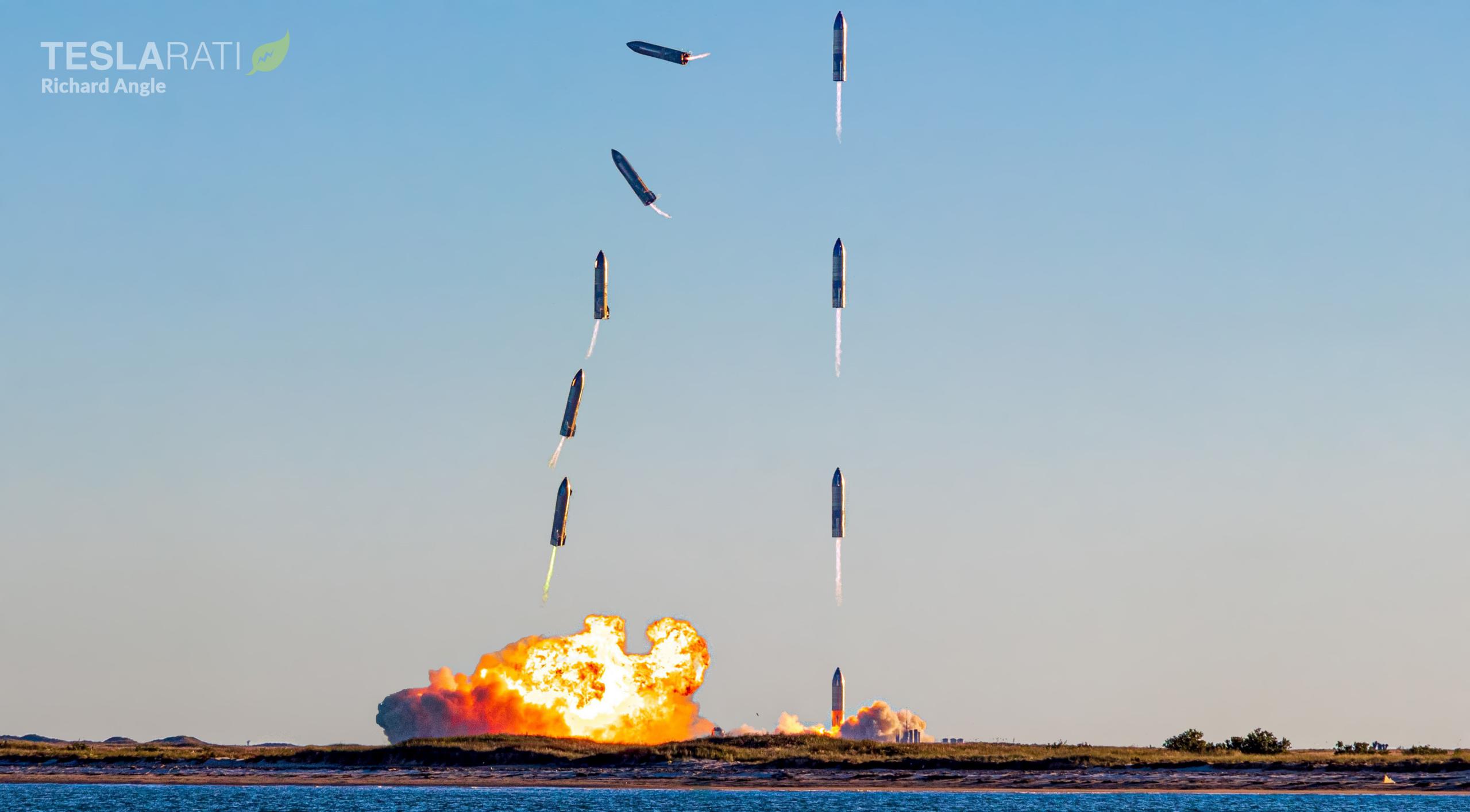

News
Relive SpaceX’s high-altitude Starship launch debut in 4K [video]
SpaceX has published a 4K recap of Starship serial number 8’s (SN8) spectacular high-altitude launch debut, highlighting all crucial aspects of the immensely successful test flight and hinting at the next steps forward.
On December 9th, after days of anticipation and delays for the unprecedented test flight, Starship SN8 sailed through a clean preflight flow, ignited three Raptor engines, and lifted off around 4:45 pm CST – just 15 minutes before the launch window was scheduled to close. In a move that would later be confirmed to be intentional, Starship’s ascent went exactly as planned with all three Raptors sequentially shutting down over the course of almost five minutes – necessary, said Elon Musk, to keep the rocket from “[blowing] through the [12.5-kilometer] altitude limit.”
Although technical difficulties prevented a high-altitude NASA reconnaissance jet from capturing aerial footage of the spectacle from up high, SpaceX certainly seems to have made do with more mundane platforms, capturing all aspects of Starship SN8’s launch in high definition.
At apogee, Starship SN8 vented most of the remaining liquid oxygen in its main tank and shut down the last active Raptor engine, kicking off an unprecedented guided freefall back to Earth. To achieve that feat, Starship SN8 had to reach apogee more or less vertical, begin falling tail-first, activate cold-gas thrusters and actuate four giant flaps to tilt belly-down, and use those same thrusters and flaps to maintain stability.
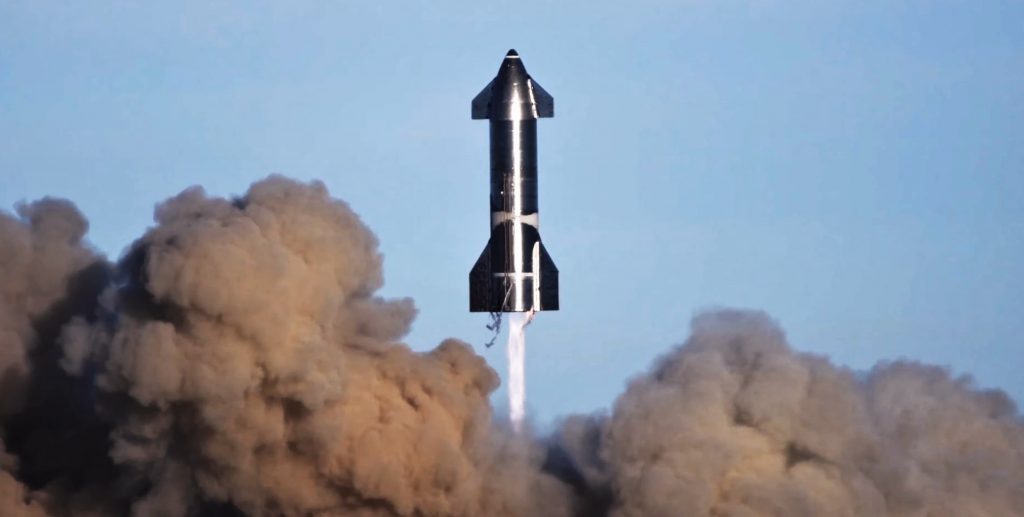
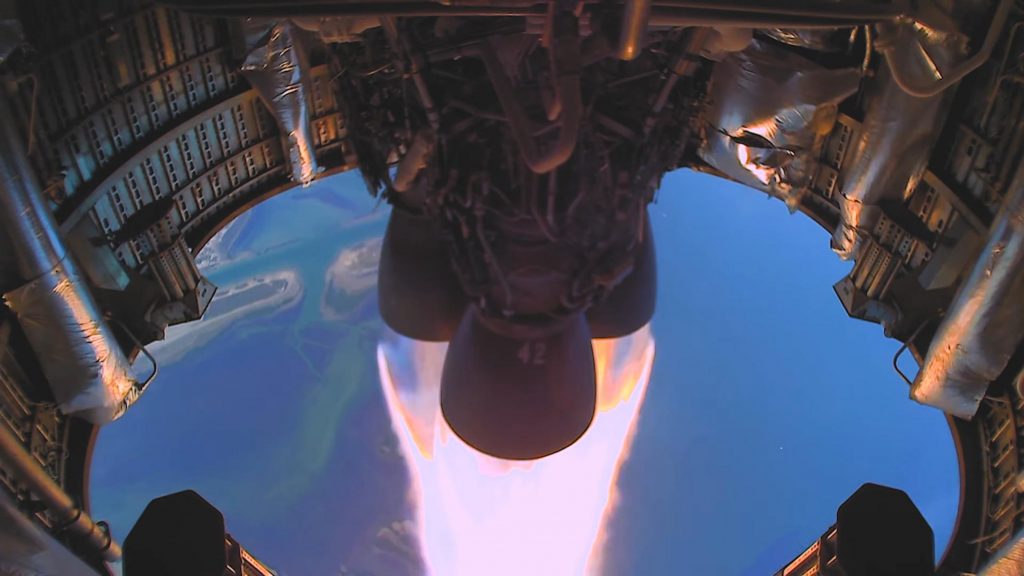

Likely reaching speeds of around 150 m/s (~330 mph) during that freefall, Starship SN8 made it look effortless, twitching its flaps and occasionally using a burst of thrusters to elegantly and stably glide back to about 1 km (~0.6 mi) above the ground. At that point, the rocket ignited one – and then two – Raptor engines with no apparent issue, gimballing violently and firing thrusters to flip its 9m by 50m (30 ft by 165 ft) hull ~120 degrees in a handful of seconds, ending in a tail-down landing configuration.
Up to that point, more than six minutes into the flight test, Starship SN8 had all but aced the gauntlet of firsts SpaceX had thrown at it, notably surpassing CEO Elon Musk’s expectation of a successful ascent but otherwise failed descent.
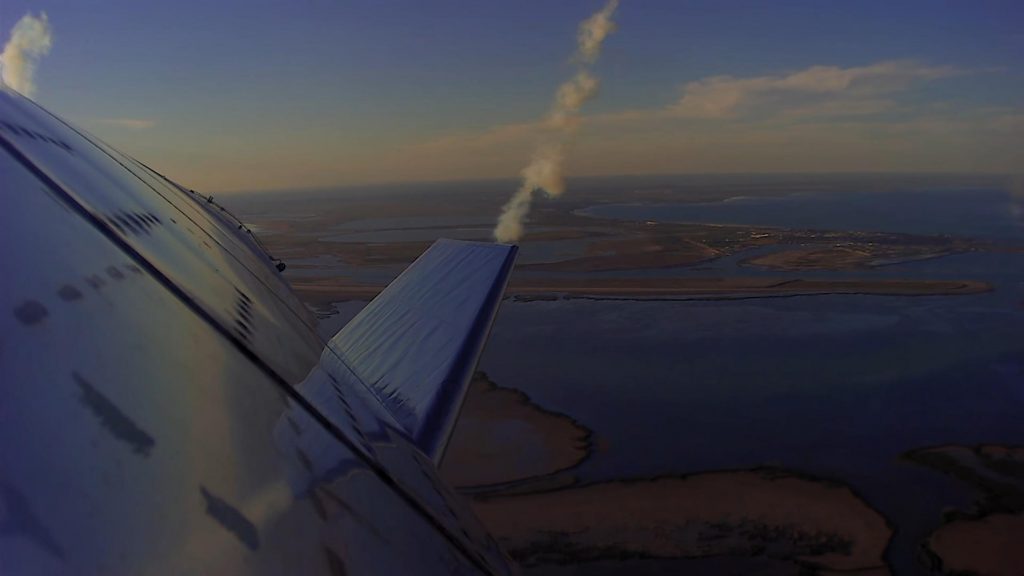

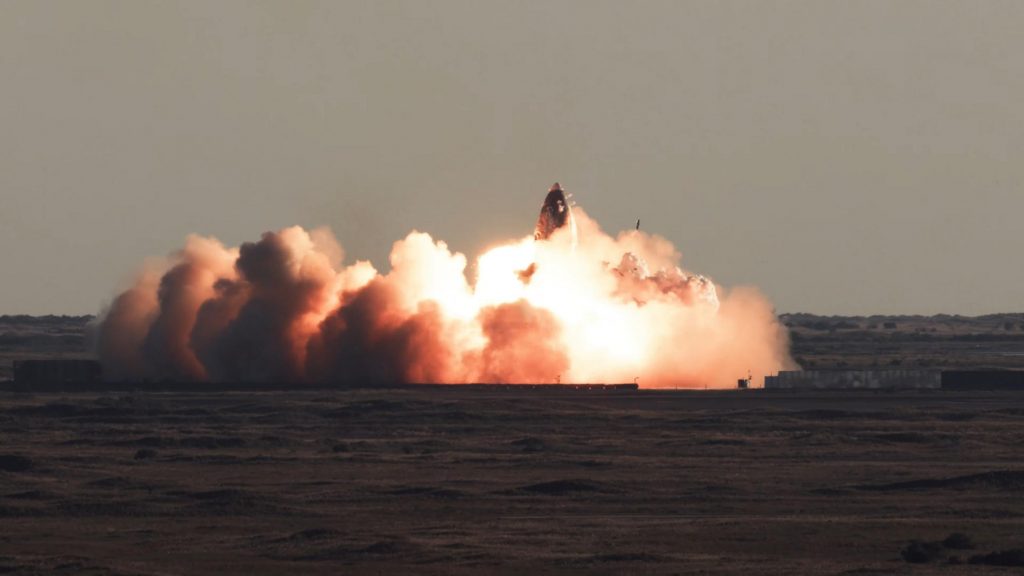
Instead, SN8 made it just a dozen or two seconds away from a soft landing before things went wrong. According to Musk, who commented after the fact, the Starship’s fuel (methane) header tank – a small secondary tank used to store landing propellant at high pressures – began to exhibit lower than needed pressures in the seconds before touchdown. Whether intentional or not, one of the two Raptors ignited during SN8’s flip maneuver shut down around ten seconds later, at which point the lone remaining engine throttled up only to have its plume turn an almost solid green.
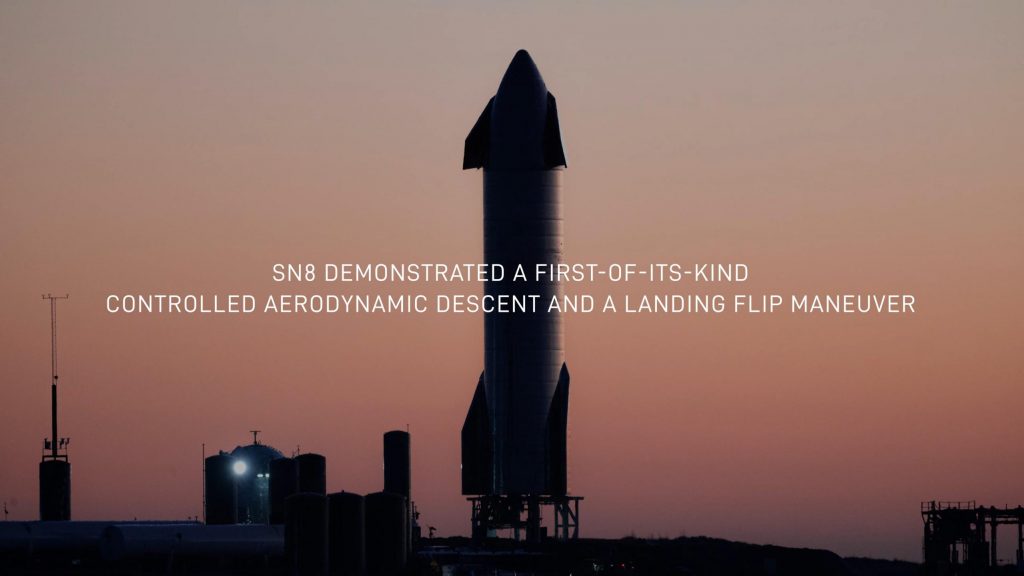
In simple terms, without enough pressure in the fuel header, Raptor’s combustion turned very oxygen-rich, dramatically ramping up the heat and literally melting the engine’s copper-rich combustion chamber liner (hence the green hue). Had that tank been able to maintain pressure, it’s reasonable to assume that SN8 would have stuck a soft landing just like SN5 and SN6 did a few months prior. Thankfully, Musk says the source of the pressure issue was “minor” and, as SpaceX notes at the end of the recap, Starship SN9 is almost ready to carry the torch forward.
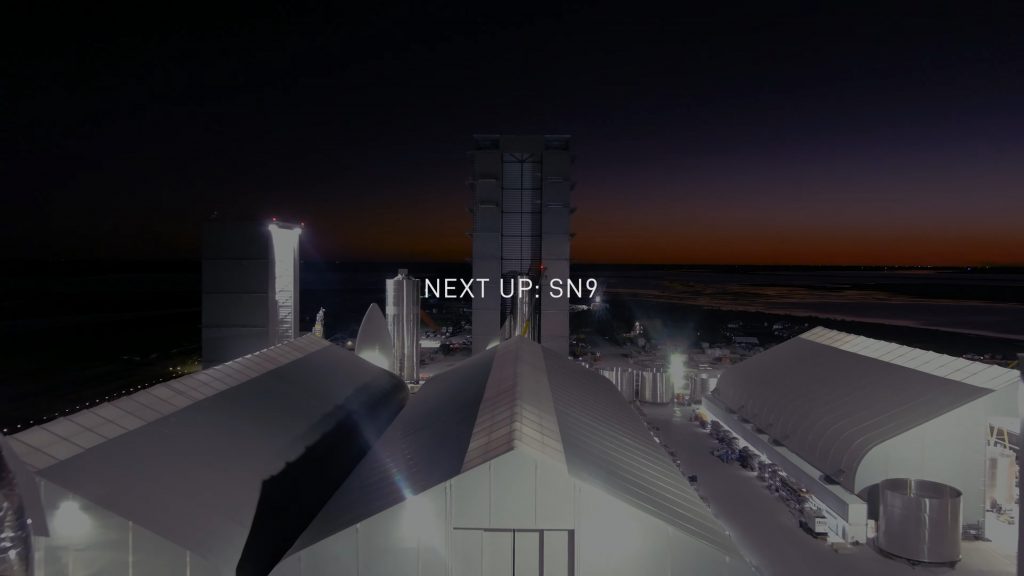

Investor's Corner
Tesla price target boost from its biggest bear is 95% below its current level

Tesla stock (NASDAQ: TSLA) just got a price target boost from its biggest bear, Gordon Johnson of GLJ Research, who raised his expected trading level to one that is 95 percent lower than its current trading level.
Johnson pushed his Tesla price target from $19.05 to $25.28 on Wednesday, while maintaining the ‘Sell’ rating that has been present on the stock for a long time. GLJ has largely been recognized as the biggest skeptic of Elon Musk’s company, being particularly critical of the automotive side of things.
Tesla has routinely been called out by Johnson for negative delivery growth, what he calls “weakening demand,” and price cuts that have occurred in past years, all pointing to them as desperate measures to sell its cars.
Johnson has also said that Tesla is extremely overvalued and is too reliant on regulatory credits for profitability. Other analysts on the bullish side recognize Tesla as a company that is bigger than just its automotive side.
Many believe it is a leader in autonomous driving, like Dan Ives of Wedbush, who believes Tesla will have a widely successful 2026, especially if it can come through on its targets and schedules for Robotaxi and Cybercab.
Justifying the price target this week, Johnson said that the revised valuation is based on “reality rather than narrative.” Tesla has been noted by other analysts and financial experts as a stock that trades on narrative, something Johnson obviously disagrees with.
Dan Nathan, a notorious skeptic of the stock, turned bullish late last year, recognizing the company’s shares trade on “technicals and sentiment.” He said, “From a trading perspective, it looks very interesting.”
Tesla bear turns bullish for two reasons as stock continues boost
Johnson has remained very consistent with this sentiment regarding Tesla and his beliefs regarding its true valuation, and has never shied away from putting his true thoughts out there.
Tesla shares closed at $431.40 today, about 95 percent above where Johnson’s new price target lies.
News
I subscribed to Tesla Full Self-Driving after four free months: here’s why
It has been incredibly valuable to me, and that is what my main factor was in considering whether to subscribe or not. It has made driving much less stressful and much more enjoyable.

I have been lucky enough to experience Tesla Full Self-Driving for the entire duration of my ownership experience for free — for four months, I have not had to pay for what I feel is the best semi-autonomous driving suite on the market.
Today, my free trial finally ran out, and I had two choices: I could go without it for a period until I felt like I absolutely needed it, or I could subscribe to it, pay $99 per month, and continue to experience the future of passenger transportation.
I chose the latter, here’s why.
Tesla Full Self-Driving Takes the Stress Out of Driving
There are a handful of driving situations that I don’t really enjoy, and I think we all have certain situations that we would just rather not encounter. This is not to say that I won’t ever experience them as someone who has driven a car for 15 years (it feels weird saying that).
I don’t love to drive in cities; I really don’t like driving on I-695 on my way to Baltimore, and I truly hate parallel parking. All three things I can do and have done, all three within the past few weeks, too.
It takes all the stress out of city driving pic.twitter.com/q0SPPrH4HU
— TESLARATI (@Teslarati) December 4, 2025
However, if I can avoid them, I will, and Tesla Full Self-Driving does that for me.
Tesla Full Self-Driving Eliminates the Monotony
I drive to my alma mater, Penn State University, frequently in the Winter as I am a season ticket holder to Wrestling and have been for 16 years now.
The drive to State College is over two hours and over 100 miles in total, and the vast majority of it is boring as I travel on Rt 322, which is straight, and there is a lot of nature to look at on the way.
I am willing to let the car drive me on that ride, especially considering it is usually very low traffic, and the vast majority of it is spent on the highway.
The drive, along with several others, is simply a boring ride, where I’d much rather be looking out the windshield and windows at the mountains. I still pay attention, but having the car perform the turns and speed control makes the drive more enjoyable.
Tesla Full Self-Driving Makes Navigating Easier
Other than the local routes that I routinely travel and know like the back of my hand, I’ve really enjoyed Full Self-Driving’s ability to get me to places — specifically new ones — without me having to constantly check back at the Navigation.
Admittedly, I’ve had some qualms with the Nav, especially with some routing and the lack of ability to choose a specific route after starting a drive. For example, it takes a very interesting route to my local Supercharger, one that nobody local to my area would consider.
But there are many times I will go to a new palce and I’m not exactly sure where to go or how to get there. The Navigation, of course, helps with that. However, it is really a luxury to have my car do it for me.
To Conclude
There was no doubt in my mind that when my Full Self-Driving trial was up, I’d be subscribing. It was really a no-brainer. I am more than aware that Full Self-Driving is far from perfect, but it is, without any doubt, the best thing about my Tesla, to me.
It has been incredibly valuable to me, and that is what my main factor was in considering whether to subscribe or not. It has made driving much less stressful and much more enjoyable.
🚨 How I’ve gotten Tesla Full Self-Driving for free…until now
Watch me subscribe to Tesla FSD! https://t.co/bjK7EEOptR pic.twitter.com/cs5CmN5PdJ
— TESLARATI (@Teslarati) January 7, 2026
News
Tesla Diner becomes latest target of gloom and doom narrative

The Tesla Diner has been subject to many points of criticism since its launch in mid-2025, and skeptics and disbelievers claim the company’s latest novel concept is on its way down, but there’s a lot of evidence to state that is not the case.
The piece cites anecdotal evidence like empty parking lots, more staff than customers during a December visit, removed novelty items, like Optimus robot popcorn service and certain menu items, the departure of celebrity chef Eric Greenspan in November 2025, slow service, high prices, and a shift in recent Google/Yelp reviews toward disappointment.
The piece frames this as part of broader Tesla struggles, including sales figures and Elon Musk’s polarizing image, calling it a failed branding exercise rather than a sustainable restaurant.
This narrative is overstated and sensationalized, and is a good representation of coverage on Tesla by today’s media.
Novelty Fade is Normal, Not Failure
Any hyped launch, especially a unique Tesla-branded destination blending dining, Supercharging, and a drive-in theater, naturally sees initial crowds taper off after the “Instagram effect” wears down.
Tesla makes major change at Supercharger Diner amid epic demand
This is common for experiential spots in Los Angeles, especially pop-up attractions or celebrity-backed venues. The article admits early success with massive lines and social media buzz, but treats the return to normal operations as “dying down.”
In reality, this stabilization is a healthy sign of transitioning from hype-driven traffic to steady patronage.
Actual Performance Metrics Contradict “Ghost Town” Claims
- In Q4 2025, the Diner generated over $1 million in revenue, exceeding the average McDonald’s location
- It sold over 30,000 burgers and 83,000 fries in that quarter alone. These figures indicate a strong ongoing business, especially for a single-location prototype focused on enhancing Supercharger experiences rather than competing as a mass-market chain
It’s not a ghost town lol. The @Tesla Diner still had over 30,000 burger orders and 83,000 fries orders in Q4. The diner generated over $1M in revenue in Q4, a $4M annual run rate, which is more than the average McDonald’s…. pic.twitter.com/XvAGLUqxej
— Sawyer Merritt (@SawyerMerritt) January 4, 2026
Conflicting On-the-Ground Reports
While the article, and other similar pieces, describe a half-full parking lot and sparse customers during specific off-peak visits, other recent accounts push back:
- A January 2026 X post noted 50 of 80 Supercharger stalls were busy at 11 a.m., calling it “the busiest diner in Hollywood by close to an order of magnitude
TESLA DINER 🍔
Frantic!!!
Crazy busy. pic.twitter.com/wMbmr8SFFn
— Rich & Sharon (@HullTeslaModel3) January 4, 2026
- Reddit discussions around the same time describe it as not empty when locals drive by regularly, with some calling the empty narrative “disingenuous anti-Tesla slop.”
When we visited it last week it was packed. We had to wait to enter, get a table and go to the restroom. We were lucky to find a spot to charge.
— Rani G (@ranig) January 4, 2026
Bottom Line
The Tesla Diner, admittedly, is not the nonstop circus it was at launch–that was never sustainable or intended. But, it’s far from “dying” or an “empty pit stop.”
It functions as a successful prototype: boosting Supercharger usage, generating solid revenue, and serving as a branded amenity in the high-traffic EV market of Los Angeles.








